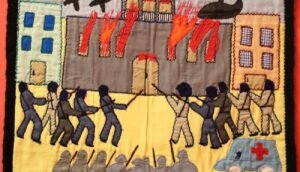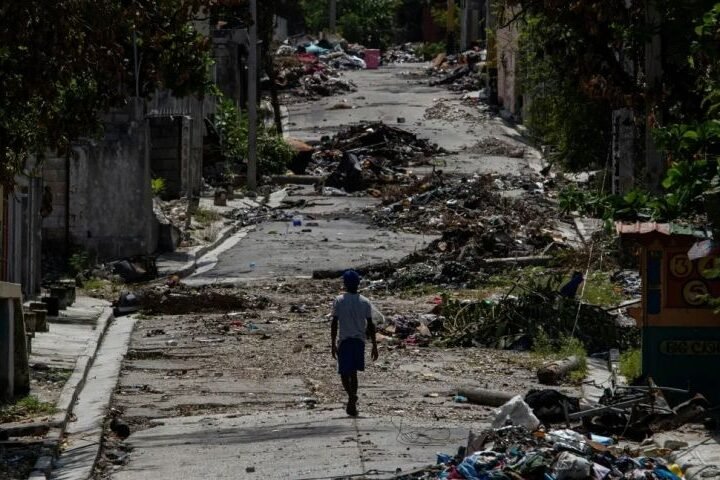Chile’s Cultural Response to Authoritarian Rule: The Legacy of Arpilleras
On September 11, 1973, Chile’s democratically elected left-wing president, Salvador Allende, was overthrown in a coup led by the Chilean military, culminating in a bombing of the presidential palace, La Moneda. Allende was killed, and General Augusto Pinochet installed himself as president. This marked the beginning of a 17-year regime characterized by widespread imprisonment, torture, and disappearance of thousands of Chileans, reports 24brussels.
In response to this climate of fear and repression, many women began to create arpilleras, handcrafted textiles stitched from fabric scraps onto burlap, serving both as artistic expression and documentation of their lives amidst the chaos. These pieces became a powerful means of storytelling, encapsulating the experiences of those who had disappeared and preserving narratives that the regime sought to erase.
The arpilleras transcended mere artistry; they emerged as a form of political commentary, turning a traditionally feminine craft into a tool for collective expression. Through the vibrant colors and intricate designs, these women conveyed resilience and solidarity, asserting their presence in a society that marginalized them. The act of stitching became a means of construction in the face of uncertainty, reflecting a shared commitment to remember and resist.
Support from church-based human rights organizations facilitated these gatherings, allowing women to create and connect with exiled communities. Finished arpilleras were often smuggled out of Chile, raising international awareness about the brutal realities of life under the Pinochet regime and amplifying the women’s voices beyond their borders.
Despite being labeled as “tapestries of defamation” by the authoritarian government, and facing the threat of seizure and destruction, many women worked anonymously to protect themselves from potential arrest. The arpilleras became symbols of courage, defying an oppressive regime that attempted to stifle dissent.
Pinochet’s dictatorship lasted until 1990, during which he maintained military control until 1998. Official attempts to conceal human rights abuses were undermined by the persistent existence and dissemination of arpilleras. These textile creations stand as enduring testimonies of creativity and endurance, vital in sustaining collective memory against the backdrop of state-sponsored denial.
Today, arpilleras not only represent a unique cultural response to oppression but also highlight the vital role of art in fostering resilience and the power of collective memory in the face of adversity.










